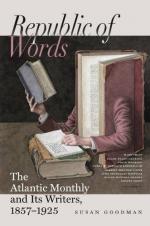So Karlee had but one wife,—the handy, thrifty ayah already mentioned. She was nine and he twelve years old when they were betrothed, and they never saw each other until they were married. A professional match-maker, or go-between,—female, of course,—was employed by the parents to negotiate terms and arrange the preliminaries; and when horoscopes had been compared and the stars found all right, with a little consequential chaffering, the hymeneal instruments were “executed.” There was no trouble on the score of caste, both families being soodra; otherwise, the sensitive social balance would have had to be adjusted by the payment of a sum of money. When the skirts of the bride and bridegroom had been fastened together with blades of the sweet-scented cusa grass,—when he had said, “May that heart which is thine become my heart, and this heart which is mine become thy heart,”—when, hand in hand, they had stept into the seventh of the mystic circles,—Mr. and Mrs. Karlee were an accomplished Hindoo fact.
To the parents on both sides, the wedding was a costly performance. There were the irrepressible and voracious Brahmins to propitiate, the hungry friends of both families to feast for three days, the musicians and the nautch-girls and the tamasha-wallahs[19] to be bountifully buksheeshed; and when the bridal palanquin was borne homeward, it was a high-priced indispensability that the procession should satisfy the best soodra society,—
“With the yellow torches
gleaming,
And the scarlet mantles streaming,
And the canopy above
Swaying as they slowly move.”
Karlee has assured me that neither his father nor his father-in-law, although both were soodras of fair credit and condition, ever quite recovered from the financial shock of that “awspidges okashn.”
A Hindoo very rarely pronounces the name of his wife, even to his most intimate friends,—to strangers, and especially foreigners, never; on the part of a native visitor it is the etiquette to ignore her altogether, and for the husband to allude to her familiarly is an unpardonable breach of decorum. When, therefore, Karlee, to gratify my friendly curiosity, led in the happy grandmother, I felt that I was the recipient of an extraordinary mark of respect and confidence,




